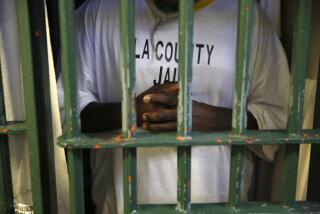Doctors Are Caught Playing Catch-Up
Most doctors have never treated patients infected with anthrax or other agents bioterrorists might use, and do not know how to diagnose the early stages, Los Angeles County’s top public health official said Monday.
Moreover, many hospital laboratories do not have the equipment or expertise to detect such agents when analyzing X-rays or blood samples. And few hospitals, many of them strapped for funds, have been able to set up comprehensive bioterrorism response plans.
“Most physicians have never seen the diseases that could be caused by the biological agents most likely to be used by terrorists,” said Dr. Jonathan Fielding, director of public health for Los Angeles County.
Efforts to teach doctors what to look for are in their infancy. County officials have developed an information sheet but so far have only sent it to emergency room doctors. Two statewide educational campaigns are being organized.
“Doctors have been reading everything they can, but it’s been somewhat disorganized,” said Dr. Jack Lewin, chief executive officer of the California Medical Assn.
Even as doctors learn more about anthrax, the disease is difficult to quickly diagnose in its most virulent form, said Dr. Thomas Cooper, a West Los Angeles pathologist who is co-chairman of the medical association’s bioterrorism task force. The early symptoms of this type of anthrax, which is contracted by inhalation rather than absorption through broken skin, are indistinguishable from those of the flu, Cooper said.
Inhalation anthrax is most dangerous after it has spread to the lymph nodes, Cooper said, but doctors cannot find it by physical examination, because it may not cause swelling for a few days.
If a doctor does suspect anthrax and sends a blood sample to a laboratory, it can take technicians two days to rule out other pathogens. Then the sample must be sent to a public health lab to confirm an anthrax infection, which can take another 24 hours, he said.
In response, Lewin said, the state medical association is planning a campaign to teach doctors about anthrax and other biochemical agents. UCLA, in conjunction with the state of California and the Centers for Disease Control and Prevention, is planning a series of seminars to educate public health officials about bioterrorism and already has developed a training program for doctors and hospital workers. The Los Angeles County Department of Public Health has made its labs available for anthrax testing 24 hours a day and has set up an informative Web site on bioterrorism.
Last week, Fielding’s office sent a fax to emergency room physicians throughout the state defining what public health officials call bioterrorism syndromes--conditions caused by exposure to biological or chemical warfare agents.
The syndromes are difficult to diagnose because their symptoms mimic each other as well as other, more benign conditions.
For example, four feared biological agents cause upper respiratory symptoms. Two cause rashes with fever, two mimic neurological conditions, and two more are similar to flu.
Still, little if any attention has been paid to improving the capability of hospitals and medical groups to handle large numbers of infected people.
“We still don’t have the resources and funding to support training, to support preparation of facilities, communication with the media” in the event of a large-scale bioterrorism attack, said Dr. Janet Williams, director of the Center for Rural Emergency Medicine at West Virginia University.
Not one of 40 East Coast hospitals surveyed by Williams and other researchers last year said it was prepared to handle a biological attack, according to a paper released Monday by the American College of Emergency Physicians. Three-fourths of the hospitals, located in West Virginia, Pennsylvania, Maryland and the District of Columbia, said they were not prepared at all, and the rest said they were only somewhat prepared.






